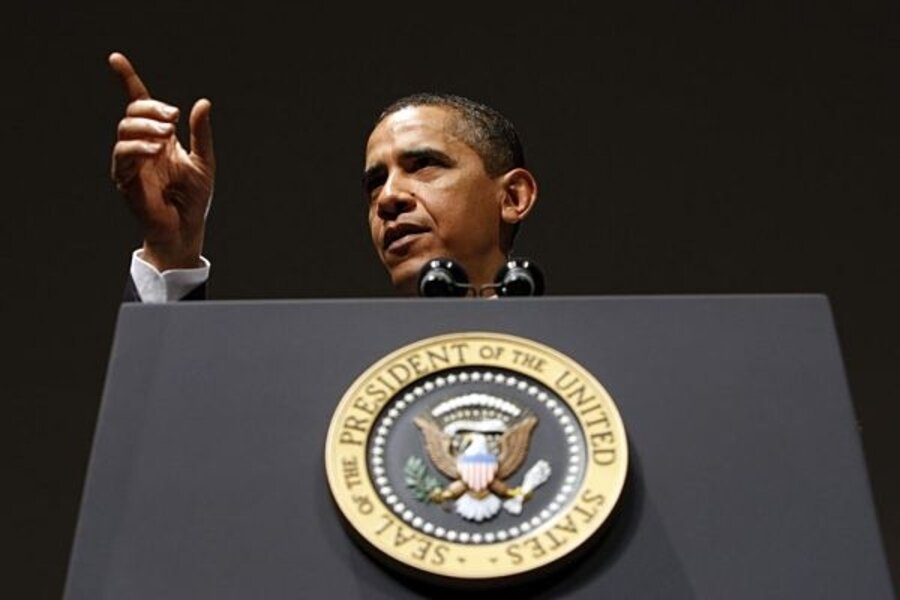Obama: Boost US R&D beyond ‘space race’ levels
Loading...
President Obama set an ambitious goal Monday to have the US spend more on scientific research and development than it did at the height of the space race in 1964.
If he can meet that mark, it would reestablish the United States as an international leader in funding R&D. "Our investments have declined as a share of our national income," Mr. Obama said in a speech to the annual meeting of the National Academy of Sciences in Washington. "As a result, other countries are now beginning to pull ahead in the pursuit of this generation's great discoveries."
US still leads by one measure
The US still spends the largest sum on R&D of any nation. But as a share of gross domestic product, Japan was already ahead in 2000 (2.98 percent of GDP vs. 2.72 in the US) and other nations were moving up . (Click here for that report.)
Now, the US ranks No. 8, according to a National Science Foundation report, outspent in relative terms by Israel (4.71 percent), Sweden (3.86 percent), Finland (3.51 percent), Japan (3.18 percent), South Korea (2.99 percent), Switzerland (2.93 percent), and Iceland (2.86 percent), although Iceland has bigger economic problems to solve right now.
Back to 'space race' competitiveness
Back in 1964, at the height of the space race with the USSR, America spent just under that – 2.9 percent of GDP – on R&D. Obama wants to exceed 3 percent.
"Just think what this will allow us to accomplish," he said in his speech. "Solar cells as cheap as paint. Green buildings that produce all the energy they consume. Learning software as effective as a personal tutor.... We can do this."
Competition from abroad
Of course, other nations are pushing to boost R&D spending, too. European Union leaders want to increase the spending of their member nations to 3 percent by 2010. China, which has boosted its R&D spending an average of 22.6 percent per year since 1991, spent 1.49 percent of its GDP on research and development in 2007 and expects to reach 2.5 percent by 2020, according to one news report.
For these nations to reach their goals, however, private companies will have to step up their own R&D investment. Although government provides most of the R&D funding in Russia (62 percent), it provides less than half the funds for research and development in the rest of the G-8 (from a high of 38 percent in France to as low as 18 percent in Japan). The US government's share is 28.6 percent.
Recession vs. R&D
The global recession may make it difficult for the private sector to expand its R&D efforts. But the Obama administration is pushing hard.
His budget would make the research tax credit permanent, making it easier for companies and individuals to plan future investments. On Monday, the president announced the formation of the Advanced Research Projects Agency-Energy, modeled after the Defense Department entity that funded the development of the Internet and stealth technology. The agency would fund research in green technologies that Obama has said will be key to economic leadership in this century.





